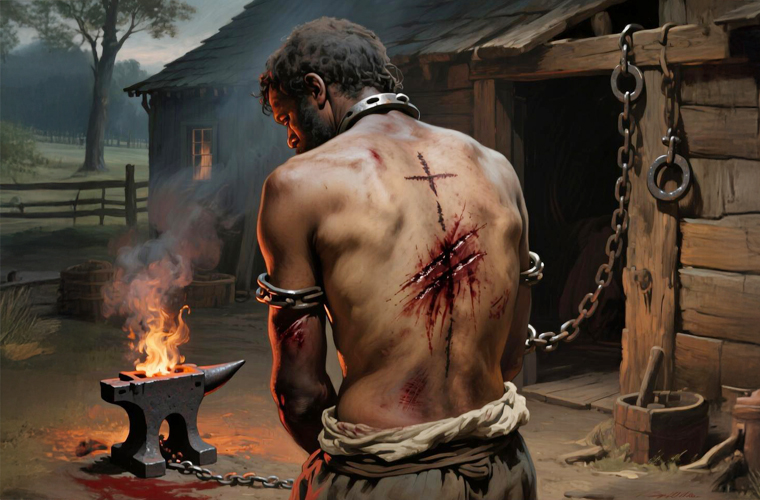The practice of branding enslaved people stands as one of the most harrowing symbols of the dehumanization inherent in slavery. Branding involved searing a letter, symbol, or mark onto an enslaved person’s skin, often on highly visible areas like the face, chest, or shoulder. This cruel act served a dual purpose: to mark individuals as property and to punish or deter those who attempted to escape their enslavement. The scars left by branding were not only physical but also carried profound psychological and social weight, reinforcing the oppressive systems that stripped people of their humanity.
A Tool of Ownership and Control
Branding was a deliberate and systematic act, rooted in the commodification of human beings. Enslavers used it to assert ownership, much like they branded livestock. A specific letter, initial, or symbol—often tied to the enslaver’s name or plantation—was burned into the skin using a hot iron. This mark was intended to be permanent, a lifelong identifier that an individual was “property” rather than a person with inherent rights. The face was a common target because the mark was immediately visible, making it easier to identify enslaved people in public or if they attempted to flee. The process was excruciating. Historical accounts describe the searing pain of the hot iron, the smell of burning flesh, and the lasting trauma of being marked like an object. Beyond the physical agony, branding was a public act of degradation, often performed in front of others to instill fear and reinforce control. For the enslaved, these marks were a constant reminder of their lack of autonomy and the ever-present threat of violence.
Punishment for Resistance
Branding was also a tool of punishment, particularly for those who resisted or attempted to escape. Runaways, who defied the system by seeking freedom, were often branded upon recapture with symbols like an “R” (for runaway) or other marks to signal their defiance. These brands served as a warning to others, a visible deterrent meant to discourage further acts of resistance. In some cases, branding was accompanied by other brutal punishments, such as whipping or mutilation, compounding the physical and emotional toll.
The use of branding as a form of punishment highlights the lengths to which enslavers went to maintain control. It was not enough to physically restrain or recapture enslaved people; the system demanded their complete subjugation, both body and spirit. The visible scars ensured that runaways could be easily identified, making it harder for them to blend into free communities or escape again.
A Lasting Symbol of Dehumanization
The scars of branding were more than physical marks; they were a constant assault on an individual’s identity and dignity. For enslaved people, these marks were a source of shame and trauma, a reminder of their status as property in the eyes of their oppressors. Yet, many resisted this dehumanization in profound ways, whether through escape, rebellion, or the preservation of their cultural and personal identities in the face of such brutality. Branding also left a mark on the historical record, serving as a stark reminder of the cruelty embedded in slavery. Abolitionist literature, such as narratives by formerly enslaved people like Frederick Douglass and Harriet Jacobs, often referenced branding to illustrate the horrors of the institution. These accounts played a critical role in exposing the moral bankruptcy of slavery to wider audiences, fueling the abolitionist movement.
Confronting the Legacy
Today, the history of branding enslaved people forces us to confront the depths of human cruelty and the enduring impact of systemic oppression. The scars borne by enslaved individuals were not just personal but collective, representing a broader societal wound that continues to shape discussions of race, justice, and equality. Understanding this practice is essential to acknowledging the full scope of slavery’s atrocities and honoring the resilience of those who survived it. As we reflect on this dark chapter of history, we are reminded of the importance of dismantling systems that dehumanize and oppress. The legacy of branding is a call to action—to learn from the past, to recognize the humanity of all people, and to work toward a future where such atrocities are never repeated.

